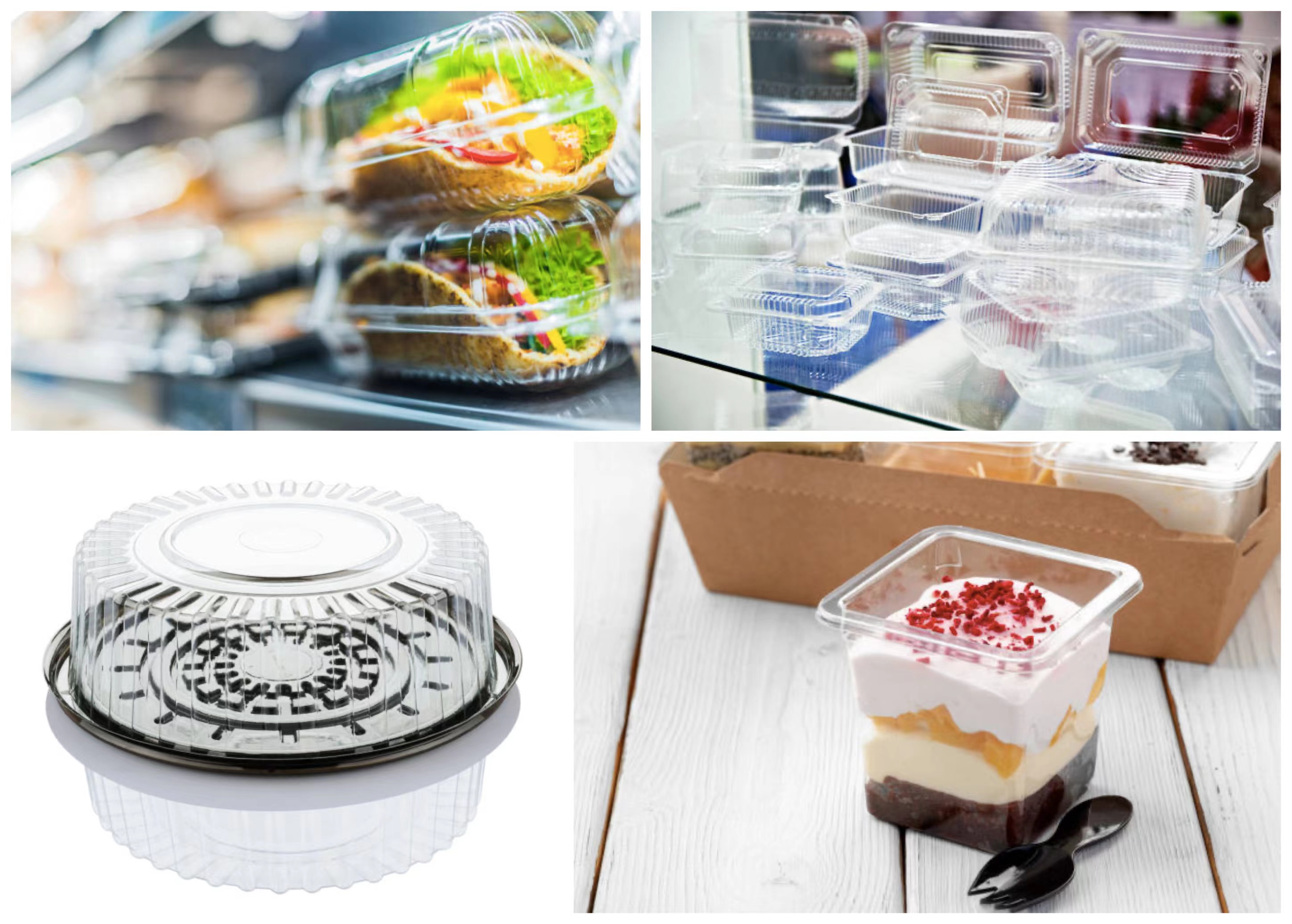Food tray and Drinking cup
Food tray and Drinkin g cup
g cup
Food has multiple requirements for packaging, including:
1.Protecting the food: Packaging should protect the food from external environmental factors, such as moisture, oxidation, and UV light.
2.Extending shelf life: Packaging should prolong the shelf life of the food and reduce the likelihood of spoilage.
3.Ensuring safety and hygiene: Packaging should meet food hygiene requirements and not contaminate the food.
4.Convenience of use: Packaging should be easy to use, carry, and store, making it convenient for consumers to use.
5.Environmental sustainability: Packaging should be environmentally sustainable and reduce pollution, making it easy to recycle and reuse.
PET packaging can meet these requirements and is widely used in food packaging.
The advantages of PET packaging include:
1.Good moisture resistance: PET material has good moisture resistance, preventing food from deteriorating due to moisture and extending its shelf life.
2.Strong oxidation resistance: PET material can effectively resist oxidizing agents such as oxygen and carbon dioxide, reducing the likelihood of food spoilage.
3.Lightweight and easy to carry: PET packaging materials are lightweight and easy to carry, suitable for various occasions such as households, hotels, picnics, and tourism.
4.High transparency: PET packaging has good transparency, allowing consumers to clearly see the food inside, enhancing product visibility and increasing consumer purchasing desire.
5.Environmental friendliness: PET packaging materials can be recycled and reused, meeting environmental requirements and reducing pollution.
 g cup
g cupFood has multiple requirements for packaging, including:
1.Protecting the food: Packaging should protect the food from external environmental factors, such as moisture, oxidation, and UV light.
2.Extending shelf life: Packaging should prolong the shelf life of the food and reduce the likelihood of spoilage.
3.Ensuring safety and hygiene: Packaging should meet food hygiene requirements and not contaminate the food.
4.Convenience of use: Packaging should be easy to use, carry, and store, making it convenient for consumers to use.
5.Environmental sustainability: Packaging should be environmentally sustainable and reduce pollution, making it easy to recycle and reuse.
PET packaging can meet these requirements and is widely used in food packaging.
The advantages of PET packaging include:
1.Good moisture resistance: PET material has good moisture resistance, preventing food from deteriorating due to moisture and extending its shelf life.
2.Strong oxidation resistance: PET material can effectively resist oxidizing agents such as oxygen and carbon dioxide, reducing the likelihood of food spoilage.
3.Lightweight and easy to carry: PET packaging materials are lightweight and easy to carry, suitable for various occasions such as households, hotels, picnics, and tourism.
4.High transparency: PET packaging has good transparency, allowing consumers to clearly see the food inside, enhancing product visibility and increasing consumer purchasing desire.
5.Environmental friendliness: PET packaging materials can be recycled and reused, meeting environmental requirements and reducing pollution.
 Food tray and Drinking cup
Food tray and Drinking cupFood has multiple requirements for packaging, including:
1.Protecting the food: Packaging should protect the food from external environmental factors, such as moisture, oxidation, and UV light.
2.Extending shelf life: Packaging should prolong the shelf life of the food and reduce the likelihood of spoilage.
3.Ensuring safety and hygiene: Packaging should meet food hygiene requirements and not contaminate the food.
4.Convenience of use: Packaging should be easy to use, carry, and store, making it convenient for consumers to use.
5.Environmental sustainability: Packaging should be environmentally sustainable and reduce pollution, making it easy to recycle and reuse.
PET packaging can meet these requirements and is widely used in food packaging.
The advantages of PET packaging include:
1.Good moisture resistance: PET material has good moisture resistance, preventing food from deteriorating due to moisture and extending its shelf life.
2.Strong oxidation resistance: PET material can effectively resist oxidizing agents such as oxygen and carbon dioxide, reducing the likelihood of food spoilage.
3.Lightweight and easy to carry: PET packaging materials are lightweight and easy to carry, suitable for various occasions such as households, hotels, picnics, and tourism.
4.High transparency: PET packaging has good transparency, allowing consumers to clearly see the food inside, enhancing product visibility and increasing consumer purchasing desire.
5.Environmental friendliness: PET packaging materials can be recycled and reused, meeting environmental requirements and reducing pollution.


